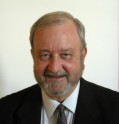While there have been many significant innovations in the design of instruments for the detection of ionizing radiation in research applications, the choices available to "the common man" for routine applications in industry or medicine have changed more slowly. Some of the most important detectors in these fields have evolved very little from their form 30 or 40 years ago., and relatively few are based on recent inventions. Some promising technologies will be briefly mentioned. There has, however, been a dramatic change in the electronic units available to process the output of all types of detectors. The advances in digital pulse processing and microelectronics now permit modes of operation that were impossible just a few years ago. With these tools, detectors can be used in ways that extend their operating range, extract additional information from signals, and permit their use in entirely new applications. Some examples are given of the evolution of both sensors and processing electronics in these directions.
|
| Glenn F. Knoll is Professor Emeritus of Nuclear Engineering and Radiological Sciences at the University of Michigan. He joined the Michigan faculty in 1962, and served as Chairman of the Department of Nuclear Engineering from 1979 to 1990 and as Interim Dean of the College of Engineering from 1995-96. His research interests have centered on radiation measurements, nuclear instrumentation, and radiation imaging. He is author or co-author of over 170 technical publications, 8 patents, and 2 textbooks. Prof. Knoll has been elected a Fellow of the American Institute for Medical and Biological Engineering, the American Nuclear Society, and the Institute of Electrical and Electronics Engineers. He has been selected to receive three national awards given annually to a single recipient for achievements in engineering and education: the 1979 Glenn Murphy Award from the American Society for Engineering Education, the 1991 Arthur Holly Compton Award of the American Nuclear Society, and the 1996 Merit Award of the IEEE/Nuclear and Plasma Sciences Society. He was one of about 1% of IEEE members selected to receive the Third Millennium Medal in the year 2000 from the society. He is one of five receiving editors for Nuclear Instruments and Methods in Physics Research, Part A, and a past or present member of Editorial Boards for Nuclear Science and Engineering, IEEE Transactions on Medical Imaging, and Physica Medica. In 1999, he was elected to membership in the U.S. National Academy of Engineering. He was selected for the 2000 Stephen S. Atwood Award, the highest faculty achievement award of the University of Michigan College of Engineering.
|

